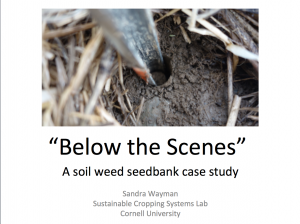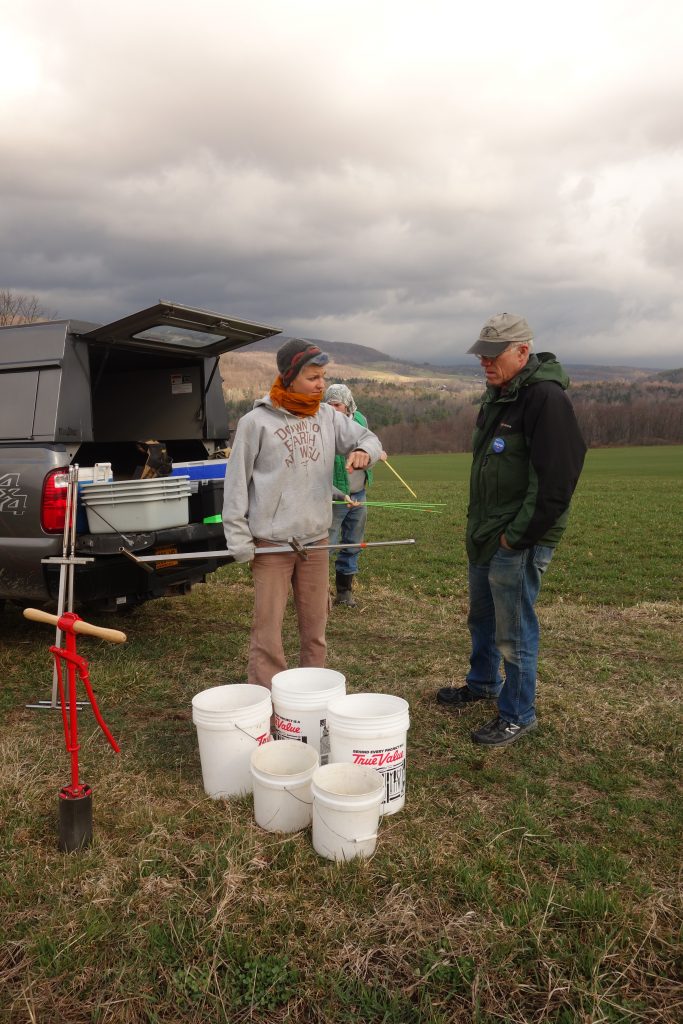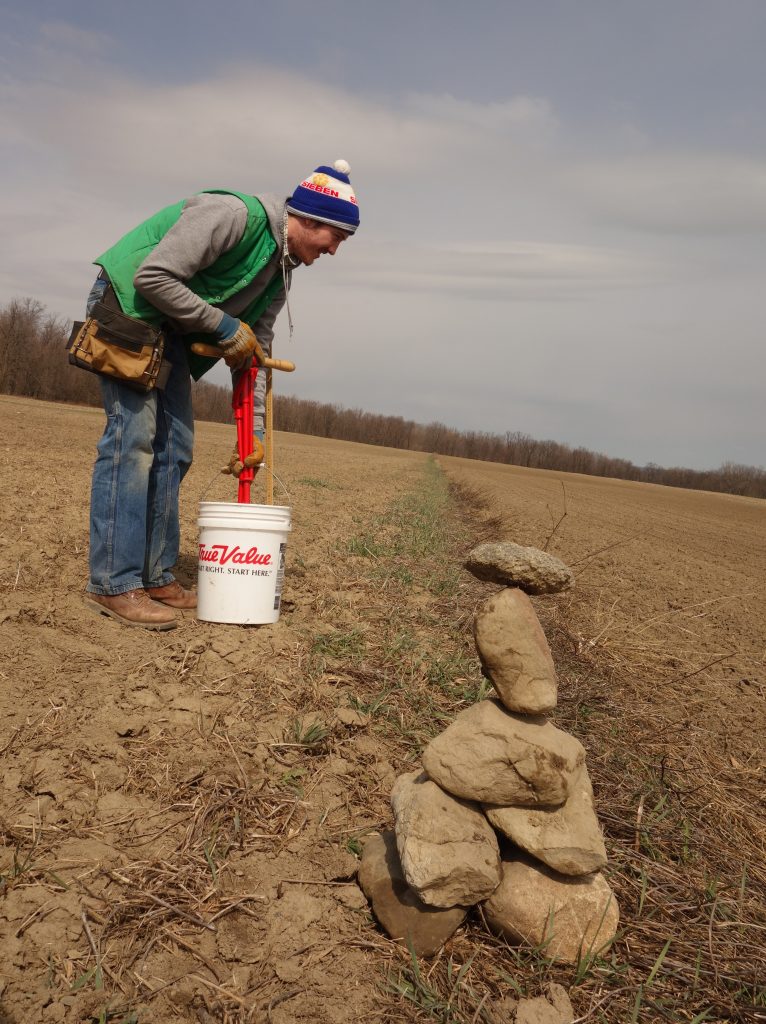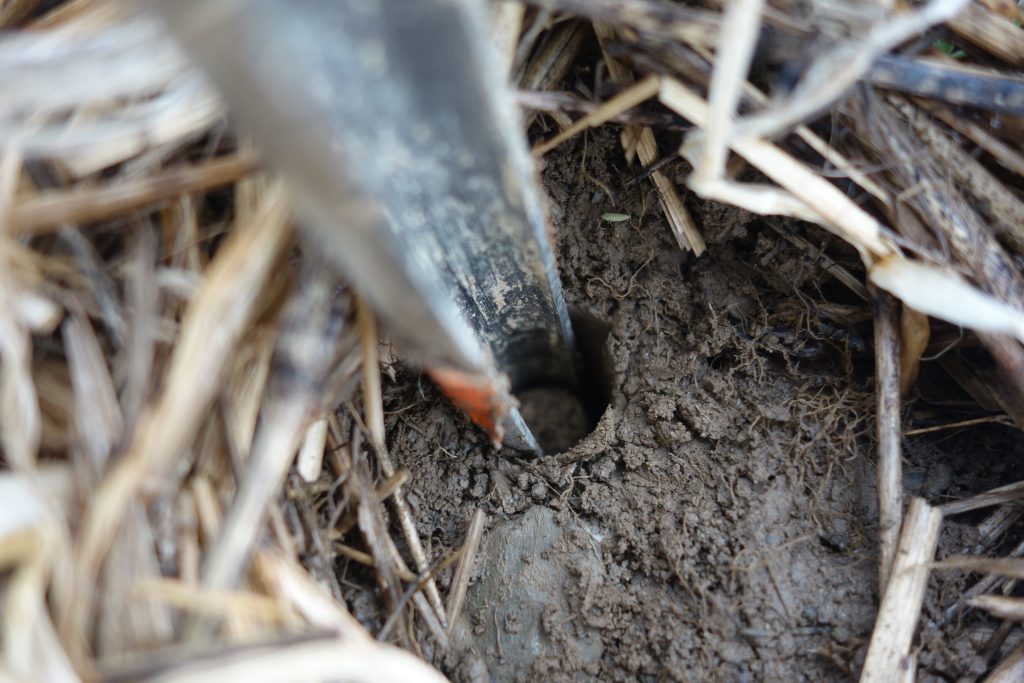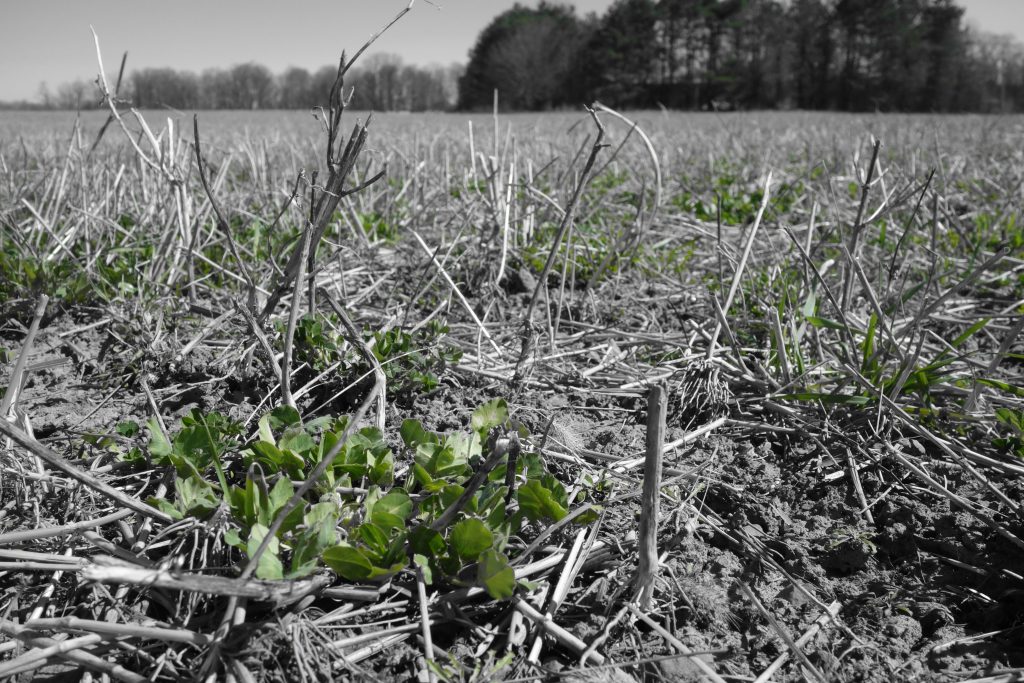What is a seedbank?
The weeds we see germinating aboveground are only part of the story; underneath there is an unseen “weed seedbank”, which has deposits (adding more seeds to the soil) and withdrawals (when weeds germinate). Different filters determine what weeds will emerge out of a seedbank, for instance the crops planted, fertility, and tillage. Farmers can observe what weeds grow in their fields, but we wanted to know what was going on underground.
Additionally, organic farmers in the Finger Lakes area have observed that red clover often volunteers profusely in some fields after tillage: is there a perpetual red clover seedbank? This may be due to the common practice of harvesting red clover for seed on these farms, during which a substantial number of seeds shatter and are dropped on the field. Under these conditions, red clover could act either as a valuable nitrogen-fixing resource or perhaps as a weed.
This project
The goal of this project was to quantify soil weed seedbanks in the fields of four local organic farms. In particular, we have heard from organic farmers that red clover (Trifolium pratense L.) often volunteers profusely in some fields after tillage.
We asked four organic grain farmers to identify “weedy”, “clean”, and “high clover” fields on their farms. We took soil samples from these fields in the spring (before weeds germinated) of 2015 and 2016. We then spread the soil out in flats in the greenhouse in a germination bioassay to let the weed seeds germinate and counted the seedlings of each species. We also ran soil health tests on the soil samples (organic matter, aggregate stability, soil respiration, active carbon, soil protein) to characterize them.
Red Clover
Red clover was the 6th most common species in 2015 and the 9th most common species in 2016. These organic farmers do in fact have red clover in their seedbanks, bolstering their observations that the red clover seedbank likely increased via intentional planting and losses from seed harvest. The number of red clover ranged from 0 to 23 seedlings per kg soil across all 12 fields. Half of the fields had over 4 seedlings per kg of soil, which is quite a lot. For example, one seedling per kg of soil equates to over 100,000 seeds per acre in the top inch of soil—enough for a good stand of red clover.
Interestingly, across all four farms, red clover populations were greater in the field chosen as “weedy” compared with the field chosen as “high clover.”
Weeds
Out of the 4 farms and 2 years (except for one instance) weed densities in “weedy” fields were at least 2x greater than in “clean” fields. However, “clean” fields didn’t have zero weeds. The “clean” fields had different filters imposed on them so that fewer weeds were emerging aboveground, but their seedbanks still contained weed seeds. What a farmer sees aboveground is not necessarily representative of the weeds he or she could be getting.
The three weed species with the greatest number of individuals across all farms were: pigweeds, purslane speedwell, and giant foxtail. Fields had between 7 and 27 different species in them per kg soil.
|
|
